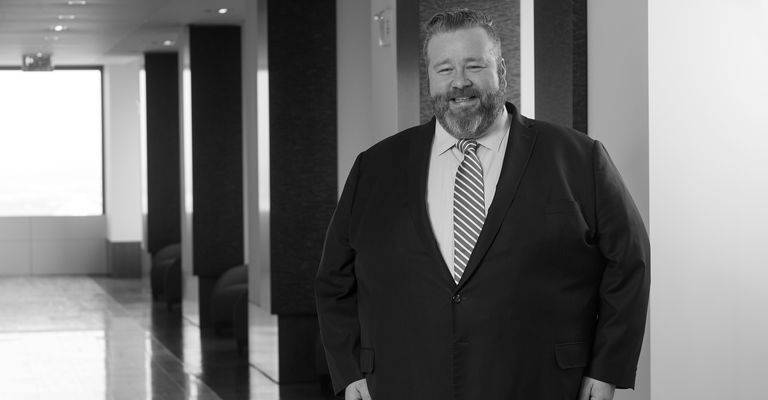Insights
Paycheck Protection Program Loan Forgiveness Application Answers Many Questions—But Not All
May 19, 2020Summary
The Small Business Administration’s (“SBA”) release of its official loan forgiveness application under the Paycheck Protection Program (“PPP,” Section 1102 of the CARES Act) answered a number of questions that borrowers and their legal and accounting advisers had regarding the program. But the application also leaves some questions unanswered, and borrowers, their lawyers, and their accountants are eagerly awaiting the release of promised loan forgiveness regulations that are expected to be posted online in coming days or weeks on Treasury's website.
Borrowers should consult all existing regulations and guidance as they prepare to apply for PPP loans and as they prepare to apply for loan forgiveness. What follows is a high-level discussion of what we have observed in the latest guidance, but borrowers should be aware that the official federal guidance is changing weekly if not daily, and, depending on the complexity of a borrower’s application, consultation with a lawyer or accountant may be vital to ensuring compliance with the program. We also note that the original applications for PPP loans were revised after being initially provided and, while we have no reason to believe the loan forgiveness application will be revised at this point, the possibility certainly exists.
What We Know Now
Following disbursement of the PPP loan proceeds, each borrower has an eight-week period during which certain costs incurred or paid may be forgiven by the government. A number of practical questions about accounting for the how, when, and what surrounding payments during the 8-week forgiveness period have been cleared by the loan forgiveness application:
- Forgivable Payroll Costs include:
- Employee wages, salaries, commissions, or similar compensation, including tips and payment for vacation, parental, family, medical, or sick leave.
- Allowance for dismissal or separation.
- Payment required for the provisions of group health care benefits, including insurance premiums.
- Costs related to the continuation of group health care benefits during periods of paid sick, medical, or family leave.
- Payment of retirement benefits.
- Payment of state or local tax assessed on the compensation of employees.
- For owner-employees, self-employed individuals, and general partners, any amounts paid to owners, capped at $15,385 per person.
- Flexibility on Pay Periods (and Paydays): Under the law as written, the eight-week forgiveness started on the day the PPP loan proceeds were disbursed. It also stated that costs were forgivable to the extent they were “incurred and paid” during the eight weeks. The SBA and Treasury, in drafting the loan forgiveness application, listened to the suggestions of a number of commentators and recognized the difficulty this poses for millions of employers who pay workers a number of days after the close of a pay period. Employers who pay biweekly or more frequently can elect to calculate forgivable “payroll costs” using “Alternative Payroll Covered Period” that runs eight weeks, starting on the first day of the next full pay period after the borrower receives the PPP loan proceeds. Additionally, the borrower can count pay for the work in the final pay period even if it is paid after the 8-week period.
- Forgivable Non-Payroll Costs include:
- Business mortgage interest payments on real or personal property (but not payment of principal).
- Business rent or leases on real or personal property.
- Business utilities (electricity, gas, water, transportation, telephone or internet access).
Note: for these non-payroll costs to be eligible, the obligation must have begun prior to February 15, 2020 (e.g., the lease agreement or utility contract must have been signed prior to that date).
- Limited Flexibility on Timing of Non-Payroll Costs: Forgivable non-payroll costs such as mortgage interest, rent, and utilities must be paid during the eight-week forgivable period that starts on the day the borrower receives the PPP loan proceeds, but borrowers are entitled to count a payment made in the month after the eight-week period if it was incurred during the 8-week period. It appears the intention is to provide flexibility while limiting borrowers to forgiveness of two regular monthly payments (not three).
- Self-Insured Health Plans: The applications makes clear that employer contributions for employee health insurance include “employer contributions to a self-insured, employer-sponsored group health plan.”
- Equipment Mortgages and Leases Count: The application extends previous guidance and clarifies that both lease payments on business equipment and mortgage interest payments on equipment are forgivable if such payments would normally be due during the eight-week period.
- $100,000 Limitation: Forgivable cash compensation cannot be greater than $100,000 on an annualized basis. According to the loan forgiveness application, this in practice means the maximum compensation amount for any one employee or owner is capped at $15,385 for the eight-week forgiveness period.
- Employee Calculations: The application’s instructions adopt a set full-time equivalency (“FTE”) employee calculation formula. “For each employee, enter the average number of hours paid per week, divide by 40, and round the total to the nearest tenth. The maximum for each employee is capped at 1.0.” There is an alternative, “simplified” method an employer can use, assigning a 1.0 for employees who work 40 hours or more per week and 0.5 for employees who work fewer hours. These calculations are important because they will be used to determine whether the loan-forgiveness amount will be reduce pro rata for a reduction in workforce during the eight-week period compared with test periods defined in the law.
- Exceptions for Workforce Reduction: There are no reductions in loan forgiveness, despite a reduction in FTE, for (1) any positions for which the Borrower made a good-faith, written offer to rehire an employee which was rejected by the employee; and (2) any employees who (a) were fired for cause, (b) voluntarily resigned, or (c) voluntarily requested and received a reduction of their hours. In addition, the application reiterates the law’s safe harbor for borrowers who restore FTE by June 30, 2020, to the same average FTE during the pay period that included February 15, 2020. Loan forgiveness for such an employer is not reduced, even if it was not able to restore FTE fully during the 8-week forgiveness period.
- No New Certifications Regarding Necessity of PPP Loan: The loan forgiveness application contains no additional certification regarding the need for a PPP loan.
- PPP Loans of $2 Million: The application contains a special box to be checked if the original PPP loan proceeds totaled more than $2 million, including loans to a borrower’s affiliates (and even if the loan forgiveness application is for less than $2 million).
- 75 Percent Requirement: Consistent with previous regulations, borrowers must apply 75% of the loan proceeds to payroll costs, and loan forgiveness for non-payroll costs is capped at 25% of the amount to be forgiven.
- Documentation: The borrower must keep backup documentation for six years. A description of the required documentation is listed in the application’s instructions and includes banks statements, tax forms, canceled checks, and receipts.
What Borrowers Still Want to Know
- Retirement and Health Care Benefits: While the application makes clear that an employer’s contributions to a self-insured group health plan is eligible for forgiveness, borrowers continue to wait for any further clarification on how exactly health care costs and retirement costs will be defined.
- Compensation to Owners: The application treats compensation to owners, including “owner-employees” differently, and such compensation is segregated from the payroll costs paid to other employees. But it is not immediately clear whether this has ramifications for otherwise forgivable payroll costs.
- Numbers of Employees: The application asks that the borrower calculate the number of employees at the time of the PPP application and the number of employees at the time of the loan forgiveness application. It is not immediately clear what relevance these figures have, given that the law’s pro-rata reduction for workforce cuts involves carefully defined FTE calculations at other defined periods. The application also does not state whether employees should be reported based on head counts or full-time equivalency, whether only employees resident in the United States should be included, or whether employees of affiliates should be included.
- Review Standards: No guidance has yet been provided to Lenders on the standard of review they are expected to undertake in reviewing the application. In also remains possible that smaller PPP borrowers will be provided additional safe harbors in submitting forgiveness applications.
Future Changes?
Members of Congress and administration officials have continued to discuss other possible changes to the PPP, including the possibility of expanding the forgiveness period. Bryan Cave Leighton Paisner will continue to monitor all changes to the law.
Related Practice Areas
-
Finance
-
Structured Finance
-
Financial Regulation Compliance & Investigations
-
Employment & Labor





